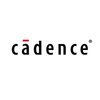Filter interviews by
Intel Component Design Engineer Interview Questions and Answers
15 Interview questions
Parasitics of a device refer to unwanted electrical properties that affect its performance.
Parasitics include resistance, capacitance, and inductance in a device.
They can cause signal delays, power losses, and interference.
Examples of parasitics are stray capacitance in a PCB trace or resistance in a wire.
Minimizing parasitics is crucial for optimizing device performance.
A MOS capacitor can be built by creating a metal-oxide-semiconductor structure.
Start by depositing a layer of oxide on a silicon substrate
Then deposit a layer of metal on top of the oxide
Finally, connect the metal layer to a terminal for the capacitor
Soft connect errors in LVS can be resolved by adjusting the connectivity rules and verifying the layout.
Review the connectivity rules to ensure they are correctly defined
Check for any missing or incorrect connections in the layout
Verify the layout against the design to identify and fix any discrepancies
Use debugging tools to pinpoint the source of the soft connect errors
Collaterals in PDK refer to additional files and documents that provide information and support for the Process Design Kit.
Collateral files may include documentation on process technology, design rules, device models, and simulation parameters
These collaterals help designers understand and utilize the PDK effectively
Examples of collaterals in PDK are process design rules (PDR), technology files, and layout design ...
I designed a component for a new smartphone model.
Developed a compact and efficient component for a smartphone
Collaborated with a team of engineers to ensure compatibility and functionality
Performed extensive testing and analysis to optimize performance
Implemented design changes based on feedback and requirements
Ensured compliance with industry standards and regulations
Timing analysis changes for violating hold time and set up time constraints.
For violating hold time constraint, the circuit needs to be redesigned to increase the delay of the data path.
For violating set up time constraint, the circuit needs to be redesigned to decrease the delay of the data path.
Hold time violations can be resolved by inserting additional flip-flops or increasing the clock-to-Q delay.
Set up time ...
Gates can be represented using arithmetic operations like AND, OR, NOT, XOR, etc.
AND gate can be represented using multiplication
OR gate can be represented using addition
NOT gate can be represented using subtraction
XOR gate can be represented using modulo operation
Arithmetic operations can be used to design complex logic circuits
A domino logic circuit is a type of digital circuit that uses a chain of inverters to propagate a signal.
A domino logic circuit consists of a chain of inverters connected in series.
The output of each inverter is connected to the input of the next inverter.
The input signal is applied to the first inverter in the chain.
The output of the last inverter in the chain is the output of the circuit.
Domino logic circuits ar...
Static timing analysis involves calculating timing constraints in circuits with flip-flops and latches to ensure correct operation.
Static timing analysis checks timing paths between flip-flops and latches.
Time borrowing allows a latch to hold data longer than its clock period.
Example: If FF1 outputs to a latch, and the latch has a delay, ensure FF1's setup time is met.
Consider clock skew and latch delay when calcu...
Verilog code to synthesize a black box with clock input and one output signal.
Identify the functionality of the black box
Write the code for the input and output signals
Use Verilog modules to synthesize the circuit
Intel Component Design Engineer Interview Experiences
14 interviews found
I applied via Referral and was interviewed before Aug 2023. There were 2 interview rounds.
(2 Questions)
- Q1. What are the collaterals in PDK
- Ans.
Collaterals in PDK refer to additional files and documents that provide information and support for the Process Design Kit.
Collateral files may include documentation on process technology, design rules, device models, and simulation parameters
These collaterals help designers understand and utilize the PDK effectively
Examples of collaterals in PDK are process design rules (PDR), technology files, and layout design guide...
- Q2. How do you resolve soft connect errors in LVS
- Ans.
Soft connect errors in LVS can be resolved by adjusting the connectivity rules and verifying the layout.
Review the connectivity rules to ensure they are correctly defined
Check for any missing or incorrect connections in the layout
Verify the layout against the design to identify and fix any discrepancies
Use debugging tools to pinpoint the source of the soft connect errors
(2 Questions)
- Q1. Explain parasitics of a device
- Ans.
Parasitics of a device refer to unwanted electrical properties that affect its performance.
Parasitics include resistance, capacitance, and inductance in a device.
They can cause signal delays, power losses, and interference.
Examples of parasitics are stray capacitance in a PCB trace or resistance in a wire.
Minimizing parasitics is crucial for optimizing device performance.
- Q2. How can you build a cap from a mos
- Ans.
A MOS capacitor can be built by creating a metal-oxide-semiconductor structure.
Start by depositing a layer of oxide on a silicon substrate
Then deposit a layer of metal on top of the oxide
Finally, connect the metal layer to a terminal for the capacitor
Skills evaluated in this interview

(1 Question)
- Q1. State machine design, work experience, setup and hold
I applied via Campus Placement and was interviewed in Dec 2016. There were 5 interview rounds.
Interview Questionnaire
7 Questions
- Q1. Questions on digital systems
- Q2. 9 coins, one heavy. how many tries?
- Q3. Represent gates using arithmetic operations
- Ans.
Gates can be represented using arithmetic operations like AND, OR, NOT, XOR, etc.
AND gate can be represented using multiplication
OR gate can be represented using addition
NOT gate can be represented using subtraction
XOR gate can be represented using modulo operation
Arithmetic operations can be used to design complex logic circuits
- Q4. BTech Project Based
- Q5. Why Intel?
- Ans.
Intel is a leader in the semiconductor industry with a strong focus on innovation and cutting-edge technology.
Intel has a reputation for being at the forefront of technological advancements
Intel invests heavily in research and development to stay ahead of the competition
Intel offers a challenging and rewarding work environment for engineers
Intel has a global presence and offers opportunities for career growth and devel...
- Q6. Any other company interested in?
- Ans.
Yes, I am also considering opportunities at Intel and AMD.
I have researched both companies and am impressed with their work in the semiconductor industry.
I believe my skills and experience would be a good fit for their component design teams.
I am open to exploring opportunities at other companies as well.
However, Intel and AMD are currently at the top of my list.
- Q7. My extra-curricular activities
Interview Preparation Tips
Experience: Toooo easy aptitude test, questions straight from Indiabix.com. 91 people were shortlisted to the interviews.
Tips: Just practice a few on Indiabix.com I would say, not even required to prepare.
Duration: 1 hour
Total Questions: 20
Round: Technical Interview
Experience: Once again, very easy. Just very very basic. Maximum, you need Digital IC Design course.
Tips: No tips, keep your calm and think.
Round: Technical + HR Interview
Experience: Completely based on my B.Tech Project. They were a specific product development team looking for candidates for their team.
Tips: Just try to match their needs by relating everything on your resume to them.
Round: HR Interview
Experience: Just random questions about you and your activities.
Tips: Nothing much from my side to offer here. 29 people got the offer. I was the only one who got it and rejected.
Skills: Digital Systems, Puzzle Solving Capability
College Name: IIT Madras
I applied via Campus Placement and was interviewed in Dec 2016. There were 3 interview rounds.
Interview Questionnaire
6 Questions
- Q1. Draw a domino logic circuit
- Ans.
A domino logic circuit is a type of digital circuit that uses a chain of inverters to propagate a signal.
A domino logic circuit consists of a chain of inverters connected in series.
The output of each inverter is connected to the input of the next inverter.
The input signal is applied to the first inverter in the chain.
The output of the last inverter in the chain is the output of the circuit.
Domino logic circuits are fas...
- Q2. How to speed up a circuit. Can voltage scaling be helpful
- Ans.
Yes, voltage scaling can help speed up a circuit by increasing the voltage to improve signal propagation.
Increasing the voltage can reduce the resistance and capacitance effects, leading to faster signal propagation.
Voltage scaling can also increase the switching speed of transistors, improving overall circuit performance.
However, higher voltage levels may also increase power consumption and generate more heat, requiri...
- Q3. Static timing analysis. Asked to write equation for a circuit with 2 flipflops with a latch in middle(latch clock has a delay from FF clock). Concept of time borrowing
- Ans.
Static timing analysis involves calculating timing constraints in circuits with flip-flops and latches to ensure correct operation.
Static timing analysis checks timing paths between flip-flops and latches.
Time borrowing allows a latch to hold data longer than its clock period.
Example: If FF1 outputs to a latch, and the latch has a delay, ensure FF1's setup time is met.
Consider clock skew and latch delay when calculatin...
- Q4. Transistor level designs for simple logic gates
- Ans.
Transistor level designs involve using transistors to create simple logic gates.
Transistors can be used to create logic gates such as AND, OR, and NOT gates.
In an AND gate, two transistors are connected in series.
In an OR gate, two transistors are connected in parallel.
In a NOT gate, a single transistor is used.
Logic gates can be combined to create more complex circuits.
- Q5. Why Intel?
- Ans.
Intel is a global leader in semiconductor technology, offering innovative solutions and a strong focus on research and development.
Intel has a strong reputation for cutting-edge technology and innovation
Intel invests heavily in research and development, providing opportunities for growth and learning
Intel offers a diverse range of products and services, allowing for a variety of projects and challenges
Intel has a globa...
- Q6. Asked about my PoRs
Interview Preparation Tips
Experience: Be clear about
Tips: Static timing analysis, Transistor level implementations
Round: HR Interview
Experience: Just for formality.
Tips: Show to enthusiasm to work in Intel
College Name: IIT Madras
I applied via Campus Placement and was interviewed in Dec 2016. There were 4 interview rounds.
Interview Questionnaire
2 Questions
- Q1. Questions based on resume and projects
- Q2. Questions on Verilog , timing analysis, course project based on Verilog, questions from the courses which I took
Interview Preparation Tips
Experience: Questions were asked from number theory-remainders, permutation and combinations, probability, ratio, compound interest, partnership ,etc .
Tips: Most questions were doable. Practicing aptitude questions will be sufficient.
Duration: 1 hour
Total Questions: 25
Round: Technical Interview
Experience: They asked me to explain my course project and other projects in detail. Then they asked everything
Tips: Prepare whatever you have put in the resume.
Round: Technical Interview
Experience: Firstly, they asked me to explain my DSP Embedded course project in detail. Then they asked series of follow-up questions. Then they gave two i/p waveforms, one o/p waveform and a clock signal, and asked me to write Verilog code for the output signal. Then they asked questions from the courses which I took.
Tips: Prepare Verilog, digital ic design and projects well.
College Name: IIT Madras
Interview Preparation Tips
Experience: In the first round they started with basic question like “Tell me about yourself?” . The entire technical questions were basic from the two books I suggested above. He asked me about 4-5 questions related to my M.Tech thesis work. The interviews went only for 20-25 min.
Round: TECHNICAL INTERVIEW
Experience: The second round was also based on basic and about 20-30 min.Third round was about 40-45 min in which all the question were based on resume. He asked me on every point which I have mentioned in my resume. He also asked to write algorithm related some basic puzzles.
Round: HR Interview
Experience: I was asked basic HR questions.
General Tips: Final Tips :
1. Resume plays the most important role in the selection. Make sure that you prepare well for the points you are writing in your resume.
2. Identify the companies you want to target. Be pragmatic in your choice and prepare accordingly.
3. For the aptitude problems form a group of people who are targeting same or relevant companies and discuss various problems. It will help you in understanding concepts/problems in less time.
College Name: IIT Kanpur
I applied via Campus Placement and was interviewed in Dec 2016. There was 1 interview round.
Interview Questionnaire
2 Questions
- Q1. Timing Analysis , what changes are required if circuit violets hold time and set up time constraints.
- Ans.
Timing analysis changes for violating hold time and set up time constraints.
For violating hold time constraint, the circuit needs to be redesigned to increase the delay of the data path.
For violating set up time constraint, the circuit needs to be redesigned to decrease the delay of the data path.
Hold time violations can be resolved by inserting additional flip-flops or increasing the clock-to-Q delay.
Set up time viola...
- Q2. Explain project.
- Ans.
I designed a component for a new smartphone model.
Developed a compact and efficient component for a smartphone
Collaborated with a team of engineers to ensure compatibility and functionality
Performed extensive testing and analysis to optimize performance
Implemented design changes based on feedback and requirements
Ensured compliance with industry standards and regulations
Interview Preparation Tips
Experience: Explain set up and hold time
College Name: IIT Madras
I applied via Campus Placement and was interviewed in Dec 2016. There was 1 interview round.
Interview Questionnaire
1 Question
- Q1. A given black box was given out of which two input signals a clock and one output signal was coming out .. the waveforms of all the signals were displayed. Write a verilog code to synthesize this circuit
- Ans.
Verilog code to synthesize a black box with clock input and one output signal.
Identify the functionality of the black box
Write the code for the input and output signals
Use Verilog modules to synthesize the circuit
Interview Preparation Tips
Experience: Upon inspection of the inputs and the clock signals i found out that it was a fsm machine and then i had to write state diagram with two inputs and two states along with dont care states also.there were three always blocks in the verilog code.
Tips: dotn give up easily ..even if you don't get keep suggesting,the interviewer will help you in the process
Skills: Verilog Skills, MOS , FINITe state machines, Digital Design
College Name: IIT Madras
Interview Questionnaire
6 Questions
- Q1. NAND, NOR structures and their sizing and how they would vary depending on loads
- Ans.
NAND and NOR structures are logic gates used in digital circuits. Their sizing varies based on the loads they need to drive.
NAND and NOR gates are fundamental building blocks in digital circuit design.
The size of NAND and NOR gates is determined by the number of inputs and the loads they need to drive.
For NAND gates, the size of the transistors in the pull-up network is increased to handle larger loads.
For NOR gates, t...
- Q2. Timing analysis questions
- Q3. Design flow for a chip development
- Ans.
The design flow for chip development involves several stages, including specification, architecture, design, verification, and manufacturing.
Specification: Define the requirements and functionality of the chip.
Architecture: Determine the high-level structure and components of the chip.
Design: Create the detailed circuitry and layout of the chip.
Verification: Test and validate the chip design for functionality and perfo...
- Q4. Questions on timings. delay in digital circuits
- Q5. Where energy is consumed in transistors?
- Ans.
Energy is consumed in transistors primarily in the form of heat.
Energy is consumed in the form of heat due to resistive losses in the transistor.
Switching between on and off states also consumes energy.
Leakage current in transistors leads to energy consumption.
Energy consumption can vary based on the transistor's size, material, and operating conditions.
- Q6. Based on given situation
Interview Preparation Tips
Experience: Questions were like: What is HOLD and SETup time? Which is more important? How to solve the hold and set up time faults? Questions from chip development were from starting of Specs till it comes out of Fibs. Front end and back-end design, design cycle, timing closure.etc. Tech interv.iew concentrated on stuff from Rabaey's digital book. To be specific, they asked about sizing of NMOS & PMOS in CMOS logic, parasitic caps in wires,basics of VLSI design flow, synthesis.
Round: Interview
Experience: They asked normal HR questions and in ethics they gave some cases like the one thatfollows:'Your friend' is working in a rival company and he forgets some important data in your room that can benefit your company. Would you go ahead and use those data?
Skill Tips: """Good CGPA is a must."""
Skills: Tech Fundaeu00b7s, General Knowledge, Proper knowledge of work done in Internships
College Name: IIT Madras
Skills evaluated in this interview
Interview Preparation Tips
Experience: It was outsourced to some online venture.. Test was quite tough..
Tips: A good grasp on aptitude questions will help immensely.. There are many common aptitude questions which will be asked in most exams.. study them well.. be good with probability, permutations and combinations.. Should know the basic electronic circuits, KCL, KVL etc thoroughly..
Round: Technical Interview
Experience: Technical Interview went well.. They asked only simple basic questions!
Tips: Study the following courses well- Digital systems, Digital IC Design, Computer architecture..Knowledge on steps of VLSI design flow and latest technologies will give you an extra edge in the interview
Round: HR Interview
Experience: there were two rounds! Asked some convention HR questions. Also based on resume..
Tips: Be ready with answers to conventional HR questions like "Why do you want to join Intel?" , "Why should we hire you" etc. Make sure that your answers will let them know that you have done a good background study on the company(you SHOULD do that in advance!).. Be ready to explain each and every point in resume. Many time they were looking for non conventional answers.. Good preparation in advance helped me a lot!
General Tips: Be prepared.. In an interview what matters most is preparation not CGPA!
Skills:
College Name: IIT Madras
Motivation: Its the best in the world!
Top trending discussions






Intel Interview FAQs
Some of the top questions asked at the Intel Component Design Engineer interview -
Tell us how to improve this page.
Intel Interviews By Designations
- Intel Software Engineer Interview Questions
- Intel Component Design Engineer Interview Questions
- Intel Intern Interview Questions
- Intel SOC Design Engineer Interview Questions
- Intel Verification Engineer Interview Questions
- Intel Software Developer Interview Questions
- Intel Software Engineer Intern Interview Questions
- Intel Graduate Trainee Interview Questions
- Show more
Interview Questions for Popular Designations
- Component Engineer Interview Questions
- Design Engineer Interview Questions
- Mechanical Engg. Design Interview Questions
- Senior Design Engineer Interview Questions
- R&D Engineer Interview Questions
- Structural Engineer Interview Questions
- Electrical Design Engineer Interview Questions
- Piping Engineer Interview Questions
- Show more
Overall Interview Experience Rating
based on 2 interview experiences
Difficulty level
Duration
Interview Questions from Similar Companies
Intel Component Design Engineer Reviews and Ratings
based on 5 reviews
Rating in categories
|
Software Engineer
399
salaries
| ₹10.9 L/yr - ₹40 L/yr |
|
SOC Design Engineer
231
salaries
| ₹12 L/yr - ₹42 L/yr |
|
System Validation Engineer
197
salaries
| ₹12 L/yr - ₹41.1 L/yr |
|
Software Developer
180
salaries
| ₹11.5 L/yr - ₹38.5 L/yr |
|
Physical Design Engineer
175
salaries
| ₹11.4 L/yr - ₹35.7 L/yr |

Qualcomm

Nvidia

Microsoft Corporation

Tata Electronics
- Home >
- Interviews >
- Intel Interview Questions >
- Intel Component Design Engineer Interview Questions

















